Earwigoagin
Tuesday, july 12, 2016.
- Australian Sailfish - Plans for a Sit-On-Top Dinghy
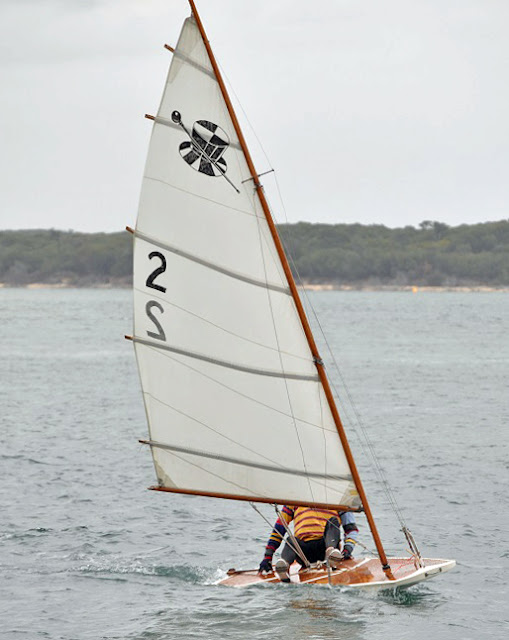
- Click here to see more photos of the Australian Sailfish
- Click here for a primer by Chris Clearly on how to race the Australian Sailfish

3 comments:
Hi Rob, This brings back some memories, as I built one from the plans in the Seacraft publication in the early eighties from some left over plywood and other bits and pieces I had in the family garage.It was very cheap to build and fit out with a little used second hand sail. Just as described it was fun to sail in a moderate breeze particularly off the wind.It would have been the ideal boat for a holiday at the beach in midsummer, when the water was warm because they were pretty wet. Another example of the fun and enjoyment to be had from simple plywood home built yachts. Neil Kennedy
Neil, Very interesting. Did any fellow Kiwi's join you in building the Sailfish or were you off enjoying it all by yourself?
HiRob, I am sure there were quite a few built in New Zealand over the years,but not on an organized basis as a class. You would see them holiday regattas at beach resorts in the summer when the weather and water were warm ! The NZ moth was really the beach boat of the day the Sailfish was just a fun boat you built for a laugh! Neil
Post a Comment
Blog Archive
- ► April (1)
- ► March (2)
- ► July (1)
- ► February (2)
- ► January (1)
- ► December (2)
- ► November (3)
- ► October (6)
- ► September (4)
- ► August (8)
- ► July (6)
- ► March (1)
- ► February (3)
- ► January (4)
- ► December (5)
- ► November (6)
- ► September (5)
- ► August (1)
- ► July (4)
- ► June (4)
- ► May (6)
- ► April (9)
- ► March (6)
- ► February (9)
- ► January (9)
- ► December (8)
- ► November (9)
- ► October (9)
- ► August (2)
- ► June (1)
- ► May (1)
- ► April (2)
- ► March (3)
- ► February (7)
- ► November (7)
- ► September (6)
- ► August (7)
- ► June (3)
- ► April (7)
- ► March (8)
- ► January (7)
- ► December (7)
- ► October (8)
- ► August (5)
- Wood Engraving: Print of Annapolis Harbor around t...
- Header Photo: R2AK - A Luddite Hero?
- Music Whenever: The Lumineers, "Cleopatra"
- Bogie Sails, Bacall Bails
- How to Sail an Australian Sailfish
- More Photos of Australian Sailfish
- New Blog on Small Boat History
- The Slap, Slap, Bounce, Pound, Pound, Water-hose P...
- ► June (6)
- ► May (8)
- ► April (6)
- ► March (9)
- ► February (8)
- ► January (14)
- ► December (11)
- ► November (13)
- ► October (17)
- ► September (11)
- ► August (13)
- ► July (13)
- ► June (8)
- ► April (5)
- ► March (10)
- ► February (11)
- ► January (13)
- ► October (10)
- ► September (17)
- ► July (10)
- ► June (2)
- ► May (7)
- ► March (13)
- ► January (5)
- ► September (8)
- ► July (9)
- ► June (12)
- ► February (1)
- ► January (3)
- ► December (6)
- ► September (1)
- ► August (6)
- ► June (5)
- ► May (3)
- ► February (10)
- ► December (19)
- ► November (14)
- ► October (12)
- ► September (9)
- ► August (20)
- ► July (15)
- ► May (14)
- ► April (10)
- ► March (11)
- ► February (6)
- ► January (19)
- ► December (10)
- ► November (22)
- ► June (14)
- ► May (11)
- ► April (15)
- ► January (11)
- ► December (13)
- ► November (18)
- ► October (19)
- ► September (19)
- ► August (17)
- ► July (20)
- ► June (16)
- ► May (26)
- ► April (18)
- ► March (12)
- ► February (18)
- ► January (24)
- ► December (34)
- ► November (15)
- 10 foot skiff (6)
- 2014 IC Worlds (8)
- Academy Dinghy (1)
- Adverts (1)
- Americana (64)
- Americas Cup (14)
- Annapolis (43)
- Antipodean Sailing (64)
- Australian Historical Skiffs (48)
- Big Guy Singlehander (15)
- Blasting (44)
- Blogger (18)
- Blogmeister (54)
- Boat Blunderer (3)
- Boat Maintenance (4)
- Boat Show (26)
- Boatbuilding (94)
- Boatyard (2)
- Canadian Sailing History (3)
- Caribbean Classes (6)
- catamarans (26)
- Classic Moth (216)
- Classic Sailboats (57)
- Coaching (3)
- College Sailing (4)
- Commentary (2)
- Comments (1)
- Crash Boat (8)
- Cruising Boats (2)
- Design Cartoon (3)
- Dinghy History (28)
- Directors Cut (33)
- Disabled Sailing (5)
- Dodging the Bullet (3)
- Dutch Sailboats (14)
- Dylan Winter (9)
- Electric Boats (1)
- Elizabeth City (31)
- Europe Dinghy (9)
- European history (11)
- Family Vacations (2)
- Flat Bottom Skiff (5)
- Fleet Building (3)
- Foilers (12)
- For sale (3)
- Frankenboat (11)
- French Offshore (10)
- Gentleman Reggae (1)
- Header Photo (145)
- Historical Sketches (8)
- Ice boat (4)
- Intercollegiate Sailing (8)
- International 14 (33)
- International Canoe (35)
- John Z Mistral (9)
- Jules Verne (1)
- Keelers (46)
- Kiteboards (1)
- knockdown (3)
- Melges 24 (1)
- Micro Dinghy (16)
- Midwinters (19)
- Music for Fridays (214)
- Music Index (3)
- Nedslocker (11)
- No Excuse to Lose (2)
- No Rudder (7)
- Oh Sh#%t (52)
- Olympic Classes (37)
- Other sailing dinghies (211)
- Other Sailing Disciplines (8)
- Other singlehanders (106)
- Paddling (1)
- Parents and Kids (13)
- Piece of Furniture (3)
- Plankers (37)
- Potpourri (3)
- Quadcopter (7)
- Race Committee (25)
- Regatta Party (2)
- River sailing (17)
- Sailboat Design (12)
- Sailgroove (2)
- Sailing Adventure (20)
- Sailing Ambassadors (1)
- Sailing Art (1)
- Sailing Canoes (59)
- Sailing Personalities (29)
- Sailing Tactics (2)
- Sailing Technique (10)
- Sailing videos (2)
- Sailing Zen (12)
- Sailmaking (5)
- Sea Snark (9)
- Sea Stories (21)
- Severn Sailing Association (5)
- Small Boat History (18)
- Small Boats (2)
- Sugar Island (7)
- Team Racing (3)
- Technology (11)
- Tillerman (33)
- Tinkerer (1)
- Traditional Sailing Craft (87)
- U.S. Sailing History (73)
- Valentine (8)
- Vamos USA (3)
- Vendee Globe 2008-9 (19)
- vintage (8)
- Vintage dinghies (107)
- Vintage Yachting (7)
- VOR 2008-9 (8)
- VOR 2011-12 (1)
- VOR 2017-18 (1)
- West River SC (4)
- Windsurfer (4)
- Wooden Boat (25)
- Y Flyer (2)

My Blog List

SUPER SIZE ME | SAILFISH 3200
by The Captain | May 20, 2020 | Articles , Captain's ships | 0 comments
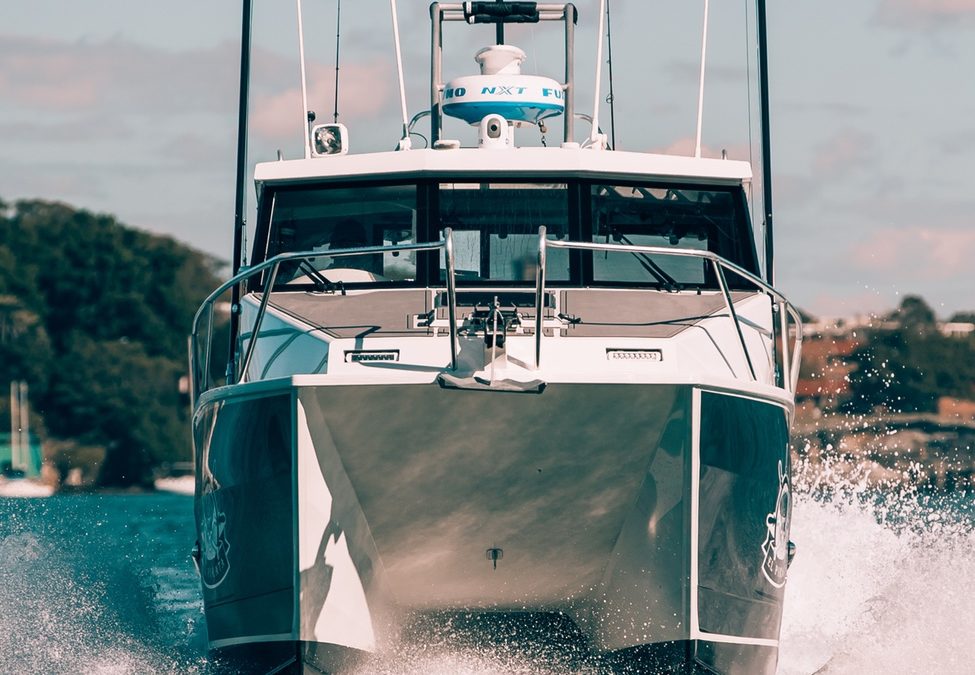
Paul Flynn loves his supersized Sailfish. His new rig is the first of the 3200 Platinum Sports range and features a beefed-up 3m beam and extended waterline length.

It’s a dead-calm winter’s morning and The Captain’s crew is rugged up for a Sydney Harbour session. A low fog is reluctantly lifting off the harbour. Housewives in white fluffy dressing gowns peer down from the balconies of waterfront mansions as we make our way along the timber boardwalk past brightly painted boathouses to meet Paul Flynn, our skipper for the day. At the end of the boardwalk sits his immaculate Sailfish 3200 Platinum Sports, its polished aluminium gleaming in the winter sun. We can’t really think of a better rig to be jigging off Sydney, our mission for the day.

We load our ridiculously large camera cases aboard and toss the ropes before venturing out across an almost deserted harbour, a few ferries and a flat-bottomed workboat tending to moorings our only companions. We tuck into the lockable cabin and ask Paul about his plan. “Winter is an awesome time to fish offshore Sydney,” he says happily. “The kings are turning up on the outer reefs, the snapper are coming onto the chew and the bluefin and yellowfin will be off the shelf soon.” Today, we’re heading out to 12 Mile Reef and The Peak. Paul’s got it on good authority from a pro fisho that there are some big kingies cruising the deep reefs. Looks like it’s going to be a sashimi slaughter.

FEEL THE PEEL
Leaving the glassy harbour, we peel around Sydney Heads into a sloppy nor’easter chop. The cat ploughs through the rough stuff. It feels like we’re crawling, but a glance at the Yammie gauges confirms we’re actually doing 30 knots. Paul fine-tunes the trim and opens the Sailfish out to a blistering 45 knots. (Captain’s note: in case you didn’t know, the sailfish is the fastest fish in the ocean, so why the hell wouldn’t he?)
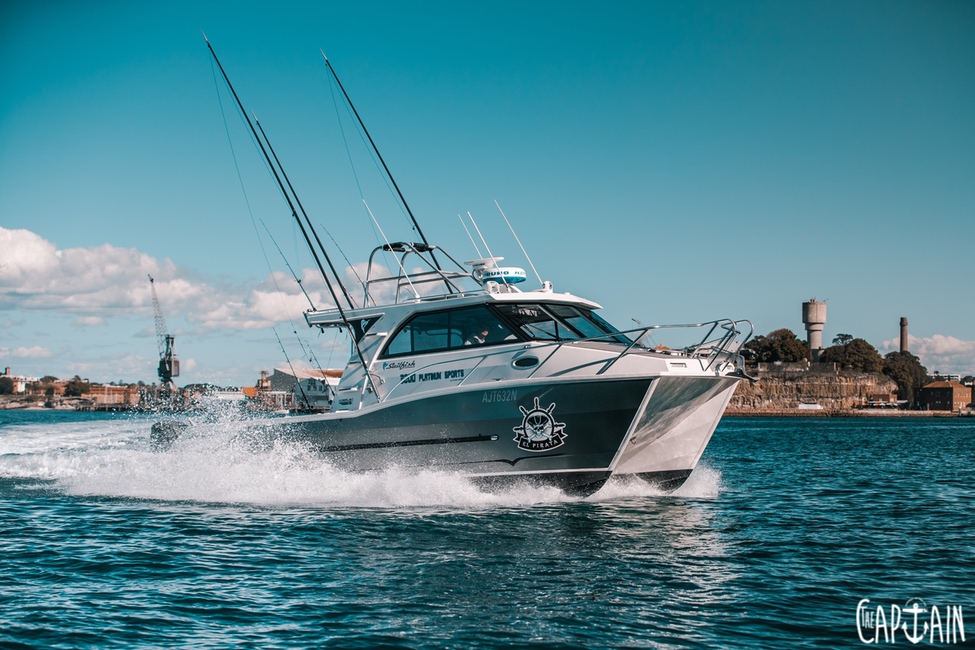
Over the thrum of the engines, we ask Paul how he got into fishing. “My dad instilled fishing in me,” he says. “He used to take me every weekend. Now the wheels have turned and I take him….” Paul stops mid-sentence. His eyes laserlock onto the Furuno sounder. “Looks like we’ve found some bait,” he mutters, switching the Yamaha Helm Master into gear and grabbing the bait jigging rod before resuming his tale. “I’ve fished everywhere — creeks, rivers, beaches and headlands — in everything from kayaks to tinnies and larger fibreglass rigs. My last boat was a Seafarer Voyager 6.8m and I had a tear in the eye when I sold it. But I replaced it with this Sailfish and it’s a beauty,” he finishes, sliding the bait jig into the windswept sea.

It doesn’t take him long to fill the twin bait tanks with yakkas (and one slimey). He’s irritatingly adept at fishing and driving the 32ft cat at the same time. “Twenty per cent of the fishing I do is solo because I like to head out on very short notice and if my mates are unavailable, I’m still going” he explains. “That’s why the Sailfish really appealed to me. You’ve got two of everything — two engines, two electrical systems and two big fuel tanks. I also run a man-overboard system that works like a proximity detector. If I fall in the drink, it kills the motors.”

FULL LEATHERJACKET
With the Sailfish’s bait bellies full of yakkas, Paul’s back on the throttles and working the twin hulls up to a speed where he can fill the tunnel with air and spray, creating a nice vapour for soft landings. Ideal cruising speed is 3500RPM, which holds us at a comfortable 25 knots, burning 30L per side. In no time, we’re back off the throttles and bobbing on the mark. It’s time to get jiggy and everyone is keen to show-off their style. The Captain’s crew goes balls to the wall, ripping the jig fast and aggressively through the water column. Paul, on the other hand, goes for a more seductive flick and wave.

After much early bluster, The Captain’s crew is already completely gassed and switching out the 300g jig for a live bait. While lining up another drift, we quiz Paul about how he ended up getting into the big Sailfish. “I wanted a cat,” he says simply. “I loved the way they rode. The 30ft Sailfish caught my eye — they’d recently reconfigured the cabin and it looked really sporty, with nice lines. I organised a test ride with the dealer on the snottiest, most horrendous day off Sydney — but the boat handled it immaculately. The only thing I thought wasn’t quite right was the cabin-to-cockpit ratio. I mentioned this to the Sailfish guys and they reckoned they could put another 600mm in the back and make it 32ft. I wasn’t interested in trailering it, so asked if we could increase the girth to 3m. The boys told me that wouldn’t be a problem, either. That’s how the first Platinum Sports 3200 was conceived. That’s the awesome thing with aluminium — it’s very configurable.
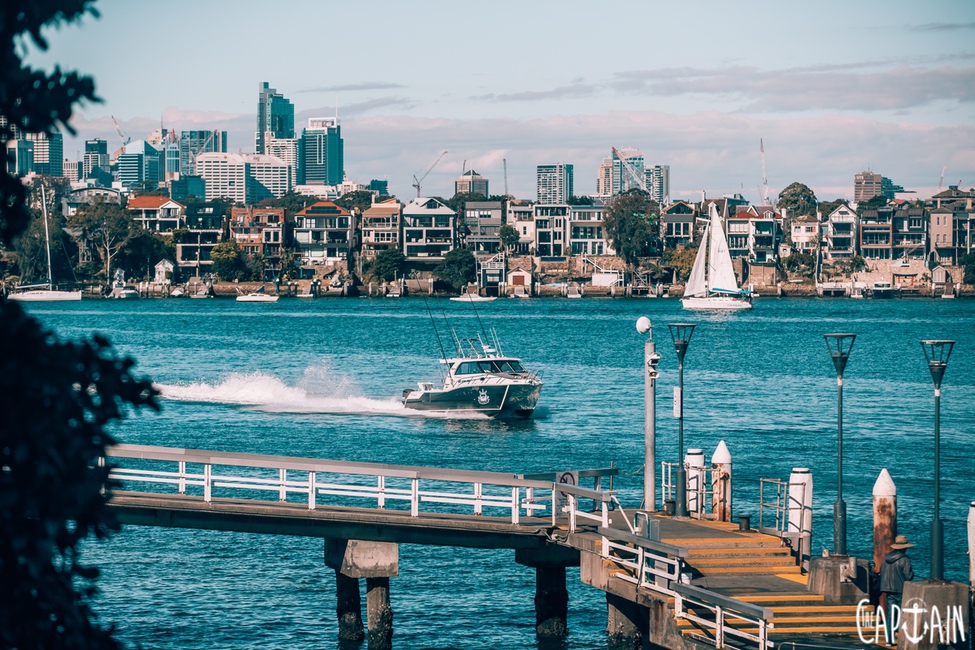
You’re not restricted like you are with a fibreglass mould and everything can be customised to suit your needs.” Next drop, and down goes the live bait on heavy lead. We salute the wide-eyed yakka for his brave efforts as he plummets to the bottom at breakneck speed. After a minute or so, the bail arm is closed and the trap is set. The livey immediately starts to panic and the rod tip vibrates aggressively. There are a few big thuds, then nothing. We retrieve the yakka to make sure he’s still OK. It’s not pretty. The leatherjackets have got to him and all that remains is a head, backbone and tail — brutal. The leatherjacket onslaught continues for the next couple of hours until we can’t take it anymore. Paul suggests a beer and barbie back in the harbour and we take him up on the offer. The remaining yakkas in the bait tank breathe a bubble of relief.

WEAPONISED WATERCRAFT
Back in the harbour, we laugh about our unsuccessful session over a beer and a few snags. This is the perfect moment to closely inspect the fit-out on the 3200. From the stern there’s a killer tunnel walkway — a game changer for fishing around outboards. Other on-point fishy features include a baitboard with built-in tuna tubes, twin live bait tanks, dive door, rigging bench, outriggers, twin electric downrigger bases, electric reel capacity for deep-dropping and a fully custom tower on the hardtop that Paul calls the “Zimmer frame”. He also wanted massive underfloor kill tanks and got his made wider, longer and deeper.

The compromise was a slightly smaller fuel tank, but he says 300L a side is more than enough. In fact, he often runs the 3200 down to Jervis Bay, only using half a tank getting there. Choice. The Sailfish designers claim the new Hydroflow hull offers amazing efficiency and this boat is the proof.

He’s a family man, so there’s a galley with slide-out BBQ and hot-water sink on the port side, This works brilliantly with the alfresco window, opening up the cabin and cockpit, making the boat feel more of an express style. You can flick the snags straight off the BBQ onto the dining table.

Paul says it’s also handy for solo fishing for striped marlin, launching into another yarn, this one is about fighting a fish from inside the cabin. “I was winding, reversing, steering, taking photos and trying not to let the line knick on anything while I was at it. Mayhem. I’ve actually caught a number of marlin on my own.” But back to the 3200 configuration. On the starboard side of the cockpit is a dominant slide-out fridge freezer, which tucks neatly away. For such a burger with the lot, Sailfish and Paul have done a great job keeping everything clean and tidy.

The 3200 is the Transformer of boats — one minute you could have an entire outdoor entertaining area set up for sleepovers with the family and friends; the next, you can pack it all down and take the boys out for a hard-core game-fishing session. Inside the fully lockable cabin is a lot more storage, a microwave and a great dinette, which fits a bunch of big boys — either eating lunch or having a cosy afternoon siesta.

In the electronics department, Paul isn’t fugging around. He’s got a serious Furuno set-up that includes the FCV-1150 he uses for traditional sonar and twin TZtouch2s for navigation and spotting bait schools on each side of the boat with multi-beam sonar. He also has autopilot, NXT Doppler radar and FLIR camera for covert operations to secret snapper grounds. Paul runs a big inverter system so he can hook up to shore power when he’s at home. When away on big trips, the boat relies on the solar cell system on the hardtop to keep the batteries topped up.

Also on the tech front, Paul has a repeater system for his mobile phone that allows him to make calls from Browns Mountain, past the continental shelf, 38km off Sydney. He tells us it’s a safety feature, but we reckon Paul’s wife made him install it so he can’t go rogue when the bluefin are biting. Pushing deeper into the cabin, we find a step down into the bathroom with toilet, shower and, strangely, more rod holders, which Paul installed so he could wash down his tackle while he’s washing his, er, tackle.

Next door is the master bed. It’s a little squeezy to access and has relatively low headroom, but once you’re in, you can stretch out like a starfish in a yoga class.

After the unsuccessful fishing session on the kings, Paul invited us out to chase tuna with him a couple of weeks later. Unfortunately, we were slurping down oysters in South Australia and couldn’t make it. Paul tells the tale of his tuna triumph. “The plan was to head out before sunrise (no fear, with radar, FLIR camera and GPS showing the way), dodge the whales and be east of the bait station by 7am. It was one of the darkest mornings I’ve seen for ages, grey and cloudy. We cruised straight out to the grounds at 23 knots. Easy, sipping 55L per hour total.

“As the sun started to peer through the clouds, five lures went into the water — three skirts and two divers (one deep, one bibless). We also had two teasers — Squid Nations and a daisychain of flippy birds. At 8.20am, we’re on! Thirty-five minutes on the rod and we’ve got it on the leader, but can’t hold it and it rips off into the deep. It’s a very big fish and we’re glad it’s on the 37kg bent butt. After five minutes, we’ve got the leader again and this time we see it — a 60–70kg yellowfin. My mate swipes the gaff at it, but it lands high up the tail. The big fish goes ballistic, shakes it out and the hook is straightened. Silence falls over the boat as we mourn for five minutes. Concha de tu madre!” (Captain’s note: literally it means ‘Your mother’s seashell” — but it’s ruder than that.)
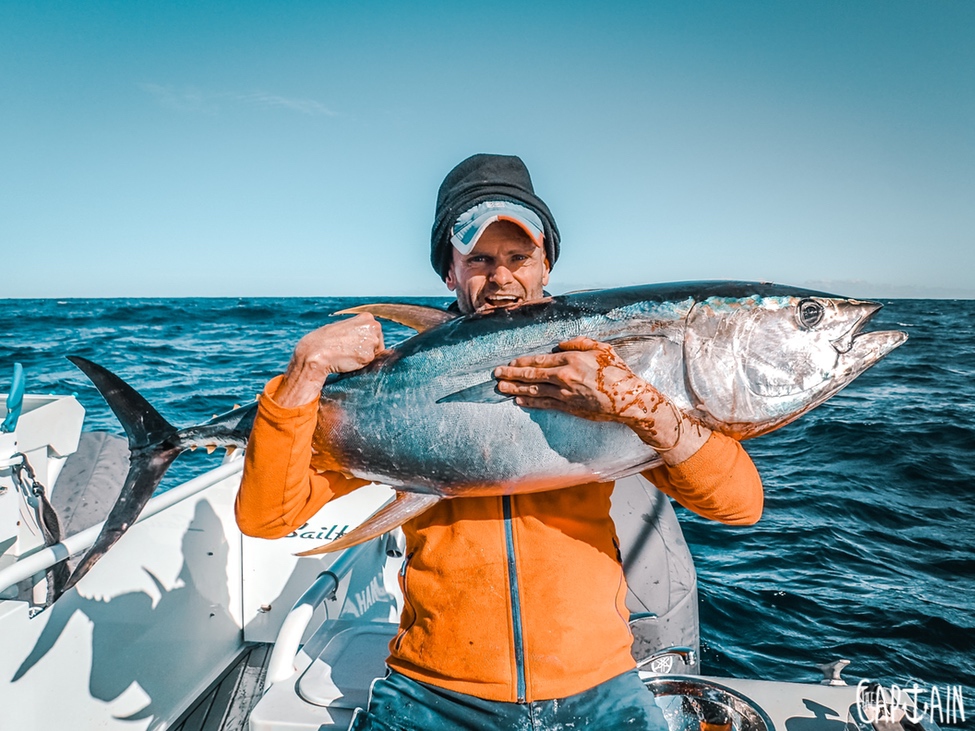
“Blame game over, it’s back to business. We head a little north and it’s a perfectly clear sky now. At 10.52am, there’s a bang on the 15kg outfit from the shotgun and it’s peeling a lot of string. It’s the Pakula Paua Hornet again — that thing is deadly. After a 20-minute fight, the fish is boatside and this time the gaff sticks. A 35kg model comes over the gunwale and it’s high-fives all ‘round. Lures back into the water and over the course of the next hour we land a 20kg, a couple of 10kg and a large albacore. Every lure gets a fish, but nothing beats the Petroleo, not even the Polu Kai lumo.”
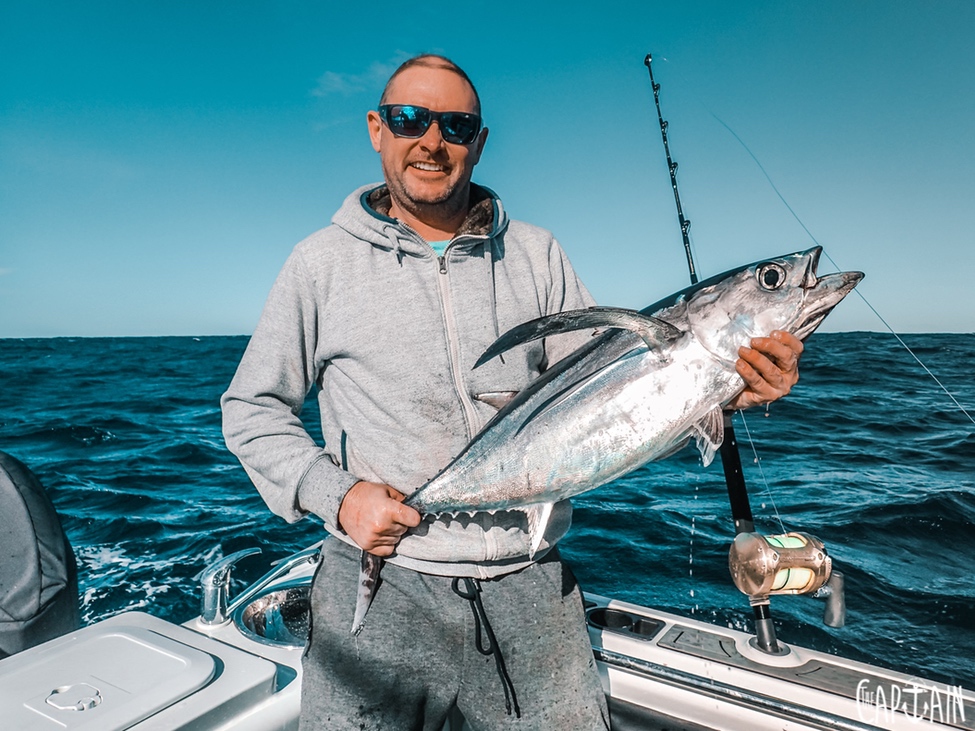
BANG FOR BUCK
The attention to detail that’s gone into this boat is astronomical, even by The Captain’s deck-out standards. Every small fitting and accessory has been carefully selected to make it user-friendly. There aren’t too many 32-footers you can run solo. It makes a huge difference to the outcome of a boat when you can work so closely with the builder during production, like Paul did with the guys from Webbe Marine and Sailfish. When it comes to value for money, just shy of $470K as tested sounds like a lot. However, when you start doing the sums on the options fitted, it’s surprisingly competitive, comparable to similar-sized fibreglass boats and new game boats. But for Paul, the money isn’t half as important as the joy his boat gives him. “Fishing is the place I go to for my mental health, some solace and spending quality time with mates and family.” Nicely said, mate. The Captain salutes you — and your sweet ride.

THREE TRICKS TO MAKE YOUR CAT MEOW
Paul doesn’t claim to be an expert at driving cats just yet, but he’s picked up a few tricks that make a world of difference.

1. Use your motors to trim to the sea conditions, especially when running down sea. Lean into a port sea by trimming the inside motor (the port motor) up, and trimming the outside motor (starboard motor) down. Do the opposite when the sea is on your starboard beam.
2. Get air under the hull. People say the faster you drive a cat, the better it’ll perform and that’s because you’re squeezing more water and air (vapour) into the tunnel and creating a cushioning effect.
3. Avoid a head sea. Cats don’t like going straight into a head sea, so always try to slightly angle off it for a softer ride. You might take a longer track than all the other boats, but you’ll still arrive home first because you’re able to move across the water so quickly.
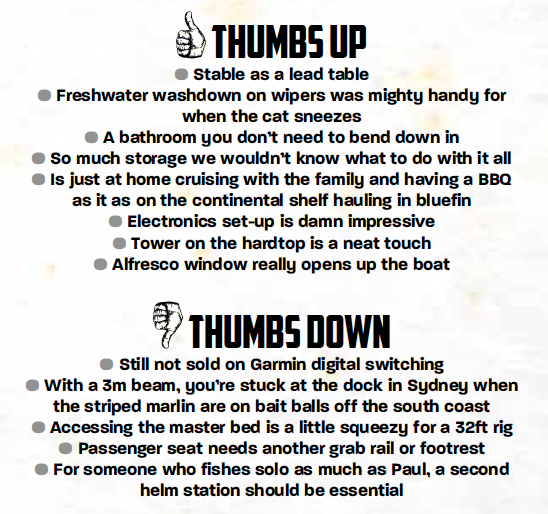
MORE INFORMATION WEBBE MARINE www.webbemarine.com.au (02) 9521 7944
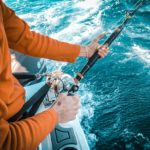
Recent Posts
- GUIDE TO BEACH LAUNCHING
- MAINTAINING YOUR BOAT
- ESSENTIAL SAFETY ITEMS AT SEA
- DEAN OF THE DEEP | TIM DEAN ABOARD HIS 47FT O’BRIEN
- FULL SEND MODE — CLAYTON MCDIARMID’S MINT HAINES HUNTER V17
Recent Comments
- What Are The Best Boats For OffShore Fishing? Australia on THE 233 FORMULA FAMILY TREE
- angelo on 18FT SHARK CAT
- Craig on EYE-EYE CAPTAIN
- Malki on EYE-EYE CAPTAIN
- Garry Smith on THE UNOFFICIAL BOAT BUILDERS’ SURVEY
- September 2022
- August 2022
- February 2022
- December 2021
- October 2021
- August 2021
- February 2021
- January 2021
- October 2020
- September 2020
- August 2020
- January 2020
- December 2019
- October 2019
- September 2019
- August 2019
- February 2019
- January 2019
- December 2018
- November 2018
- October 2018
- September 2018
- February 2018
- January 2018
- December 2017
- November 2017
- October 2017
- February 2017
- January 2017
- December 2016
- November 2016
- August 2016
- October 2015
- September 2015
- Captain's ships
- Project boat
- Rations and rum
- Secret destinations
- Spearfishing
- The craftsman
- Tried and tested
- Uncategorized
- 2024 BOAT BUYERS GUIDE
- SWS ADVENTURES
- Email Newsletters
- Fishing Boat Reviews
- Fly Fishing
- Marine Electronics
- Fishing Tackle
- Fishing Destinations
- The Bahamas Fishing Guide
- Boating Safety
- Ultimate Boat Giveaway

How to Rig Your Boat for Sailfishing
- By George Poveromo
- November 4, 2022
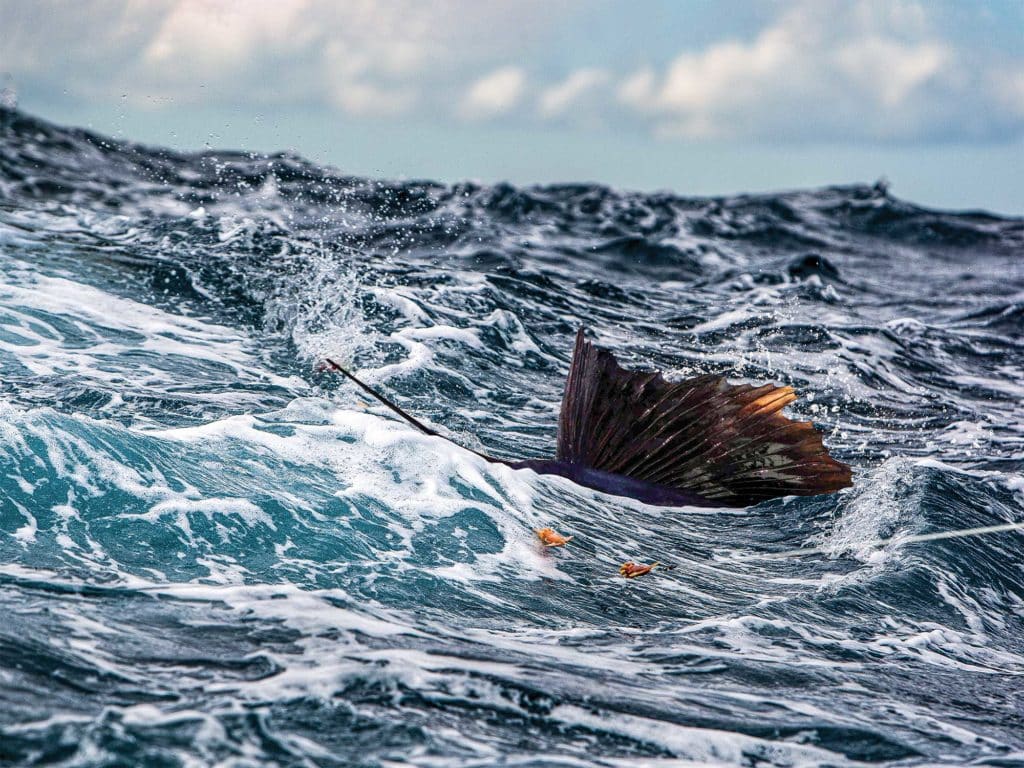
Successful live-bait sailfishing requires deep knowledge of this unique billfish’s migratory and feeding patterns. You need to understand how water temperature, current and wind direction influence such movements. You need specialized tech and behaviors. Then you need techniques to match these scenarios and teamwork to take advantage of them. Because proper gear is also critical, I’ve outlined all the tackle and equipment I use aboard my 33-foot CC. Use it as a blueprint if you’re looking to dial in similar rigs and tackle.
A Well-Rigged Boat
Good sonar and great charts .
Both are a must for locating reef -bottom jutting out into current, wrecks, bait concentrations and surface-temperature readings. Learn to look for places where north-flowing blue current washes over structure like this.
A High-Powered Livewell
My twin 34-gallon livewells are fed by a Hooker Sea Chest. Two 4,500 gph pumps circulate the water inside the chest itself, eliminating air infusion, dry pumps and pump failures at all boat speeds. The volume and velocity of water feeding each well, important for certain bait types, is controlled by a dial on my console. Another huge plus: The pumps are external and easily replaced.
Plenty of Power Outlets
To power electric kite reels, four 12-volt Hubble electrical outlets are positioned under the gunwales—two in the bow and a pair in the cockpit. That lets us drift or slow-troll a single kite off the stern, or drift a pair of kites utilizing both the bow and cockpit stations.
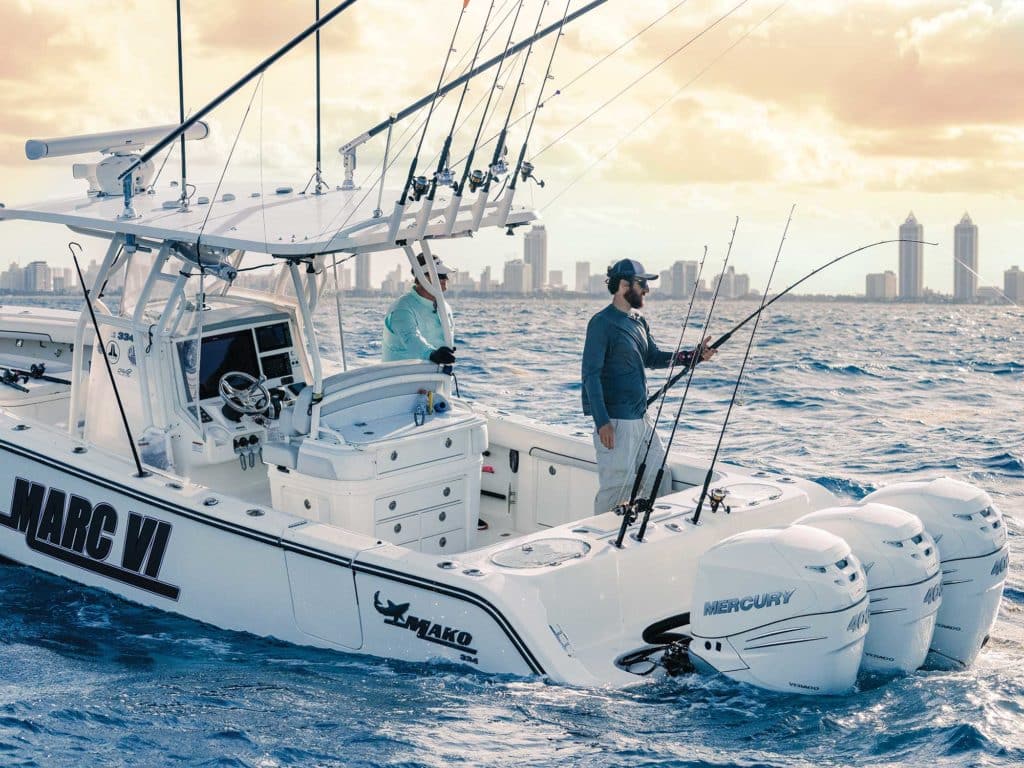
A Whole Lot of Rod Holders
A total of 26 gunwale-based Lee rod holders enable us to slow-troll live baits or drift a full spread complete with dual kites and flat lines.
For trolling, I’ve got two 30-degree Lee swivel rod holders and one 15-degree Lee flush-mount holder per side and within the aft gunwales. From there, eight more Lee holders are positioned along each gunwale and aimed seaward for drifting baits. A pair of Lee swivel rod holders occupy the bow, giving me the freedom to pivot as needed. Four zero-degree Lee holders are within the transom cap.
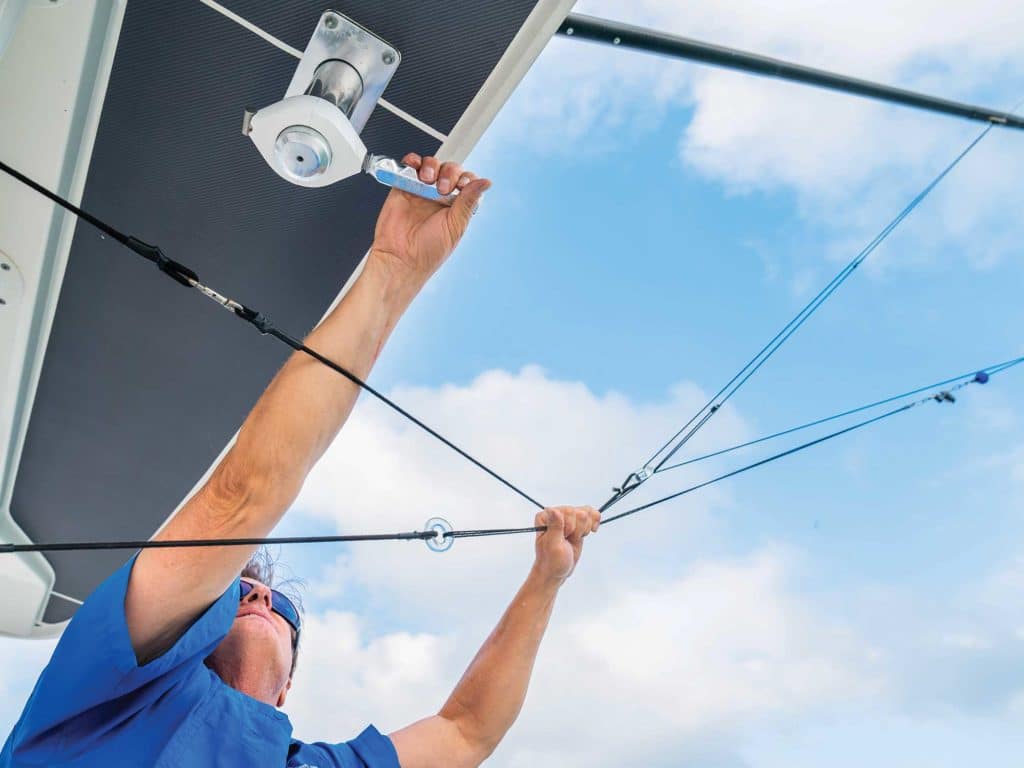
A Way to Spread Baits
Outriggers are ideal for spreading live baits and kites when slow-trolling. They’re excellent for placing additional baits. For example, my Lee 20-foot carbon-fiber poles and 15-foot carbon-fiber center rigger are each rigged to accommodate two baits per pole. When you use all three riggers, you can spread six live baits out behind the boat. Add in a pair of weighted flat lines and you’re up to eight baits (with more if you add a fishing kite).
Electric Reels for Teasers
Daisy chains can electrify a bait spread, whether live-baiting or towing naturals. Utilizing a pair of Elec-Tra-Mate Model 310 Pancake Teezer reels, I run my teaser lines through all three outrigger eyes and in the clean water to the outside of the boat. Keep the commotion up tight. If a fish rises on the teaser, pitch a live bait its way. The beauty of outriggers and teaser reels is that a boat will already be dialed in for trolling natural baits in areas that frown upon live-baiting for sailfish. Just add some dredges to build an underwater illusion.
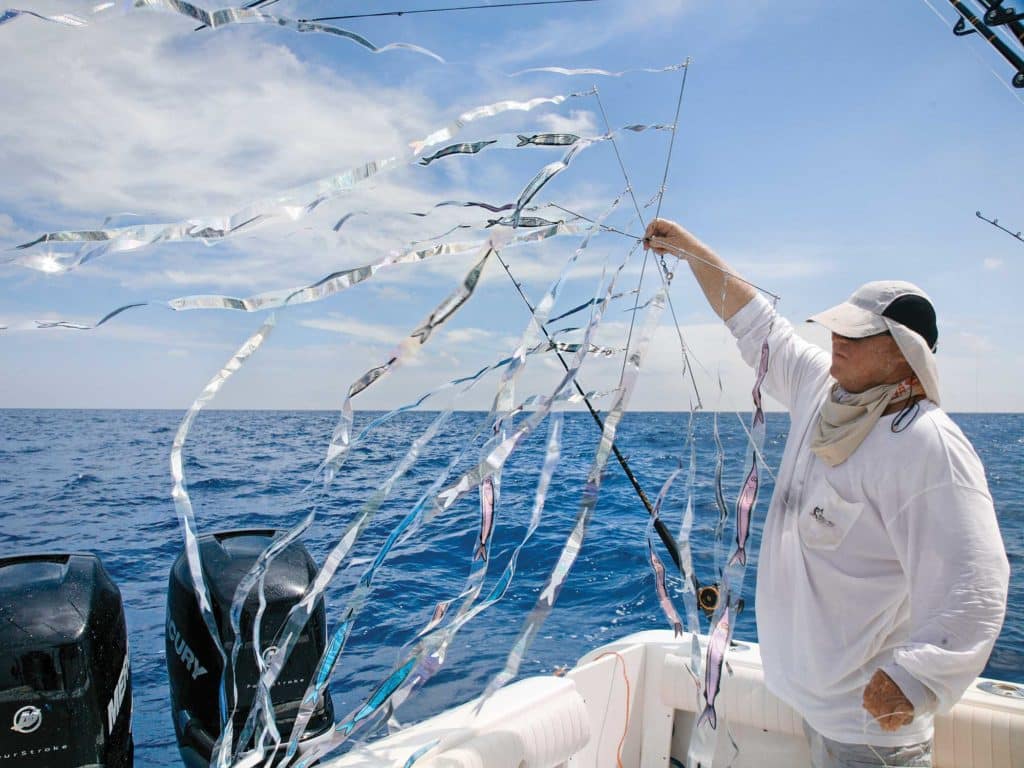
Holographic Attraction
Similar to bump-trolling with daisy chains, a holographic dredge placed 10 to 15 feet down while drifting will enhance the illusion of baitfish holding near the boat. The more strips and holographic fish, the better.
Slow Your Drift
To counter a fast drift and give baits more soak time within a zone, deploy a parachute anchor sized to your vessel. For example, I keep a 15-foot, 20-pound Para-Tech Sea Anchor Parachute within the console of my 33-foot Mako.
Tridents for Kite Rigs
Trident rod holders are excellent for keeping outfits close to a fishing kite for easy station management. Strategically positioned gunwale rod holders can accomplish the same.
Top to Bottom Equipment
Electric kite reels .
Based upon personal preference, fill 4/0- or 6/0-size reels with 60-pound monofilament, 80-pound Dacron or braid, or 50-pound braid for light wind. Rig with a minimum of three retractable release clips (different diameters to lock on their respectively sized swivels), followed by at least two additional swivels for clip-on release clips. The length of line from the kite to the first release clip is 80 feet, with 60-foot spacing between remaining clips and swivels.
Have at least one kite for each wind velocity: extra-light, light, medium, heavy and extra-heavy. And keep some backups handy. If a kite does end up in the brine, it will need a freshwater rinsing to rid it of salt crystals.
Kite Balloons
Filled with helium (don’t forget the tank) and affixed to the back of a kite for windless and light-wind days, these specialized 36-inch balloons also keep a kite afloat should it fall into the sea. A regular balloon affixed to the back of a kite during a breeze is also good insurance against a kite sinking, should it hit the drink. Use split shot when you’re flying two kites to spread them apart.
Egg Sinkers
Use egg sinkers from 10 to 16 ounces for your deep baits. Rig each sinker to several inches of 12-pound mono with a snap swivel at its opposite end. This snap swivel hangs on a short Bimini twist in your fishing line and remains open. When the sinker comes within reach, the open swivel is simply lifted from the Bimini twist, enabling the angler to wind their fish to the boat. Leaders are between 30 and 40 feet long on deep baits.
Terminal Tackle
A handy box with live-baiting essentials includes rigging needles, various sizes of rubber bands (for bridling), swivels, spacer beads, balloons, soft copper wrap, weights for kite floats, and ring guides (for joining fishing line to a kite release clip, avoiding wear on the fishing line).
Keep another box with easily accessible inline circle hooks in a variety of sizes. Fluorocarbon in 30-, 40- and 50-pound-test will be your go-to leader material. Naturally, 50-pound offers the best protection, but sometimes it’s necessary to scale down to 30-pound to get bites from wary fish. Scale down as needed to fool finicky fish—it’s better to break off a few than miss the hookup.
Read Next: Sailfish Can’t Resist These Trolling Baits and Lures
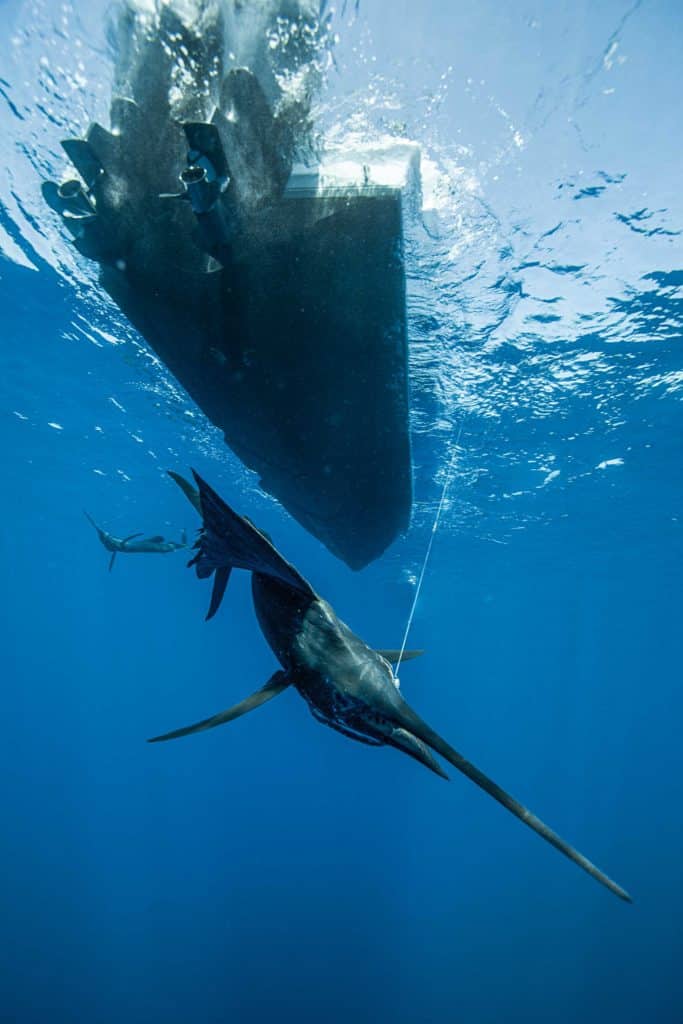
Game Plans for Scenarios
Sight-casting to bait showers .
Prominent in the Florida Keys, but also occurring along South Florida beaches when ballyhoo are solid, sailfish corral these baits over shallow patch reefs, often in clear water.
Our tackle consists primarily of spinning reels carrying a minimum of 300 yards of monofilament line, more specifically 6500 and 7500 Penn Spinfisher VI reels with 12-pound (6500) and 20-pound (7500) Sufix Superior monofilament and 40-pound fluorocarbon leaders. Rods are 7-footers rated for 20- to 40-pound-test lines.
Pin live ballyhoo to a 5/0 VMC inline Tournament circle hook by running the point down through the ballyhoo’s lower jaw and securing the shank in place with soft copper wrap. When sails are tailing or seen farther offshore, a belly-hooked live pilchard is best.
Prospecting for Followers
These same spinning outfits are good for prospecting for followers accompanying a hooked sailfish. (They can be deep and out of sight.) Here, I prefer 20-pound line to better control a sailfish and not exhaust it during battle (promoting a healthier release).
If a prospecting bait isn’t picked up initially, repeatedly recast near the hooked fish.
Flying Kites Downwind
We drift quite a bit with kites, covering downwind swaths of water with kite baits and upwind ones with our flat and D lines. Our conventional outfits are 7-foot rods rated for 30- to 50-pound lines and hold a minimum of 350 yards of mono.
Our kite outfits are a mix of Penn Fathoms, with 25N, 30 and 40 lever-drag models filled with 20-pound Sufix Superior monofilament. We’ll often bump up the kite leaders to 50-pound fluorocarbon because they’re not as apparent dangling from a kite. The leaders are 30 feet long, tied into a short double line in the main mono with a Bristol knot.
Slide a ceramic or metallic ring guide onto your main fishing line (which affixes to the kite release clip), followed by a 2- to 4-ounce egg sinker (based on bait size and wind velocity) and a marker float. Use different color markers to identify each outfit. Under the float and on the leader, we’ll knot a piece of No. 64 rubber band, which acts as a stop. Slide the stop to where you’d like to see the float on the leader. During the fight, and when the float reaches the rod tip, keep winding; it will slide down right near your fish.
Trolling Upwind
Spread the same types of outfits (minus the floats) among the upwind gunwales for drifting. Drop your leaders to 40 pounds and lengthen them to 40 feet. The latter is important for keeping your weights that much ahead of your deep baits.
With smaller baits, like pilchards, cigar minnows and herring, we’ll free-line them on 12- or 20-pound spinners.
These same conventional outfits can be used in slow-troll mode utilizing the boat’s outriggers, or in conjunction with a kite and its outfits.
Your Artificial Arsenal
- Mold Craft Junior Wide Range: This long-standing international favorite continues to rack up sailfish releases. Frank Johnson Sr., Mold Craft’s founder, developed the “soft head” concept so his lures would feel more natural to billfish. The formula seems to work.
- Capt. Harry’s Blue Boy: This 6-inch lure’s translucent skirt changes color under various light conditions and water hues. It basically lights up like a panicked bait with a predator closing in, a natural illusion that just might be the key in getting a window shopper to strike.
- Islamorada Flyer: A realistic flying-fish replica from the Florida Keys, the Original Blue and Silver Small Single Skirt lure is around 5 inches long. Its small, semi-round head is not prone to interfering with hook-sets. Soft, reflective wings also generate vibrations.
- More: 2024 Boat Buyers Guide: More Resources , Center Consoles , How-To , November/December 2022 , Rigs and tips , sailfish fishing
- More How To

Mid-Atlantic Wahoo Fishing

Managing Expectations When Launching Fish-Tagging Initiatives

Birds Lead the Way to Trout and Reds

West Coast Rail-Rod Techniques to Catch Huge Tuna
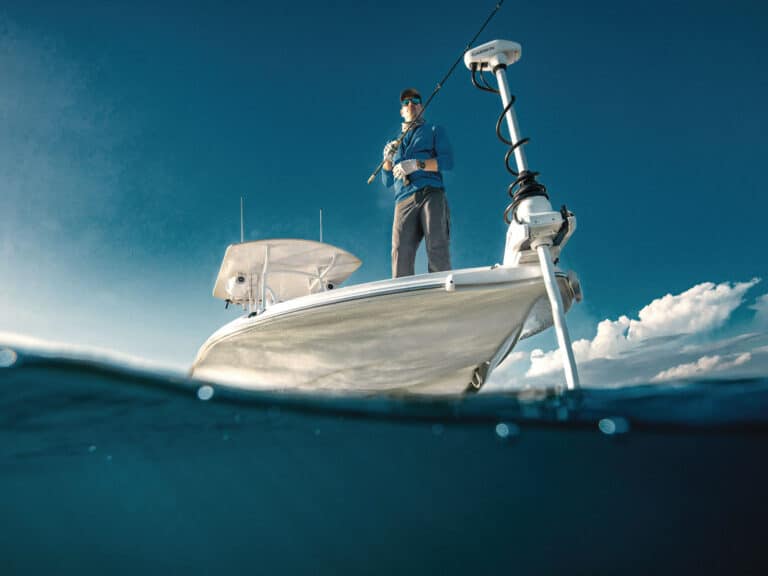
Best Boat Trolling Motor Features for Saltwater Fishing

Spotlight on Quantum
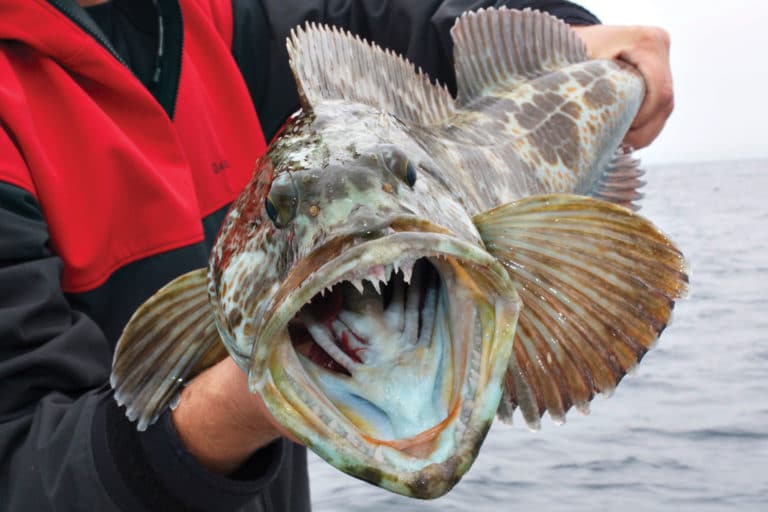
Fishing for Lingcod with Large Saltwater Swimbaits

ODYSSEY Battery: Ask the Internet

- Digital Edition
- Customer Service
- Privacy Policy
- Terms of Use
- Cruising World
- Sailing World
- Salt Water Sportsman
- Sport Fishing
- Wakeboarding
| ||||||||||||||||||||

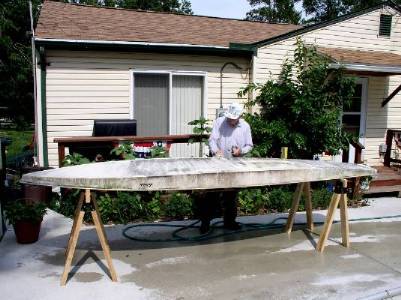
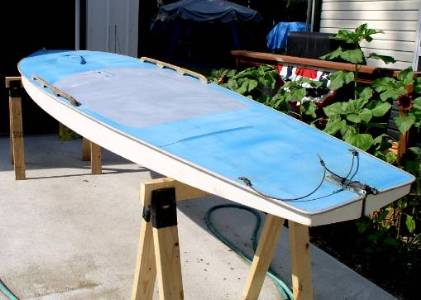
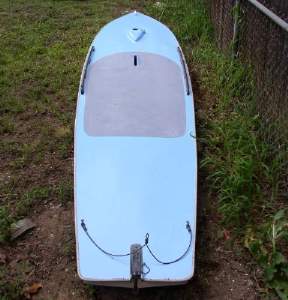
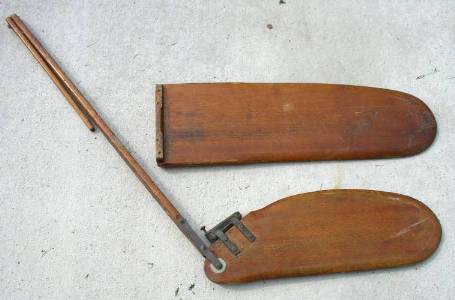
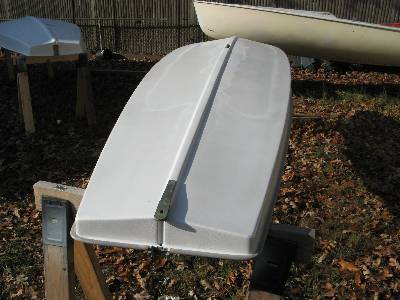
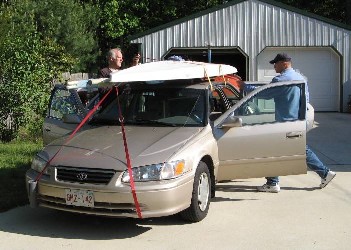
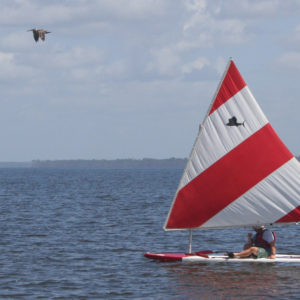
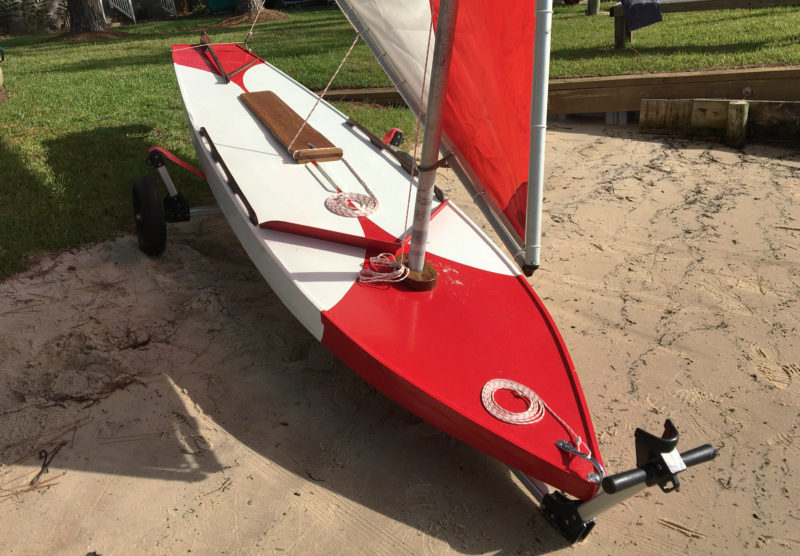
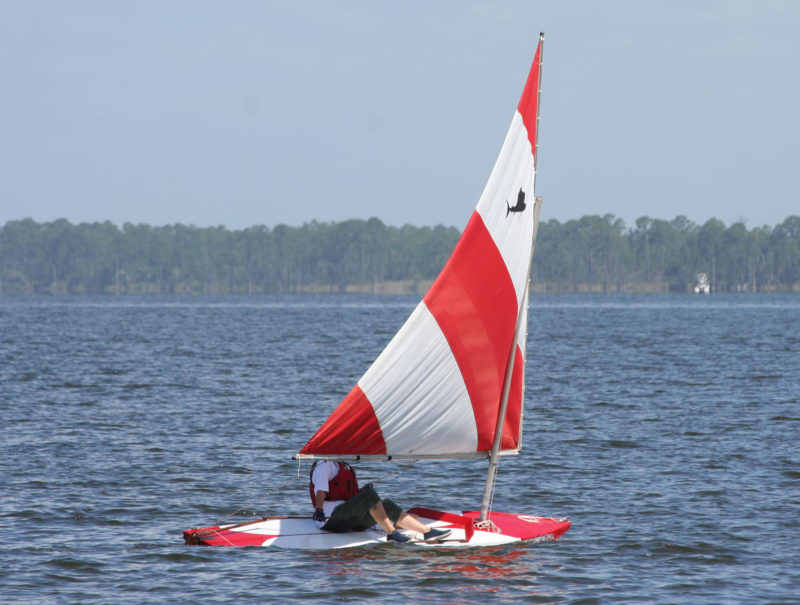
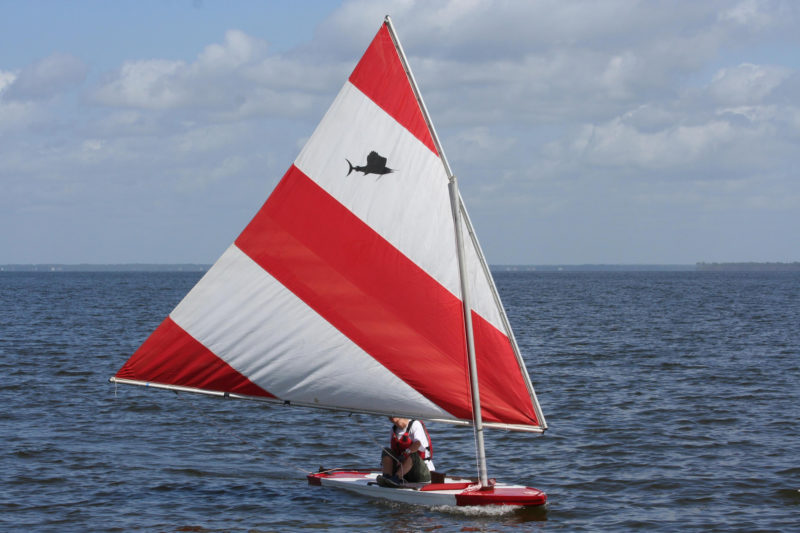
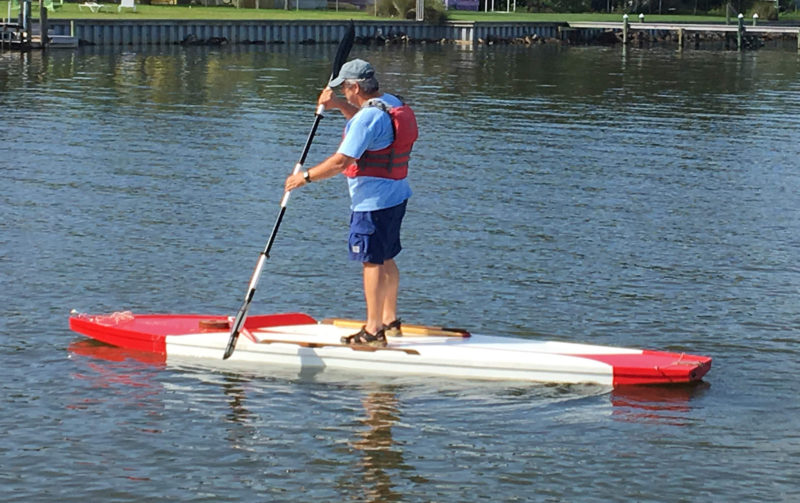
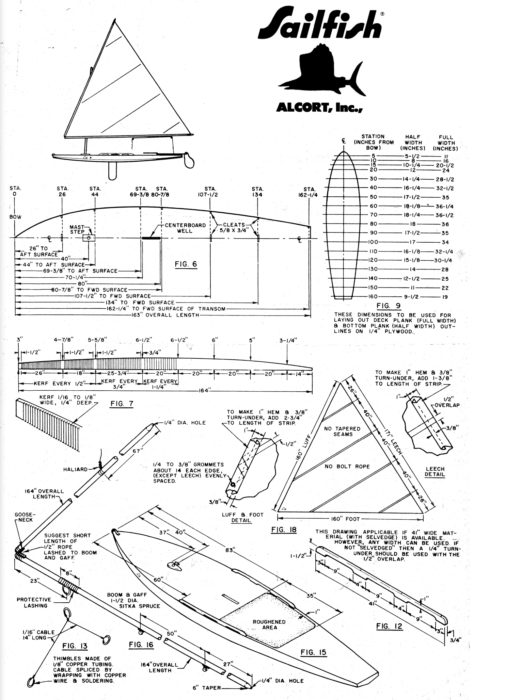
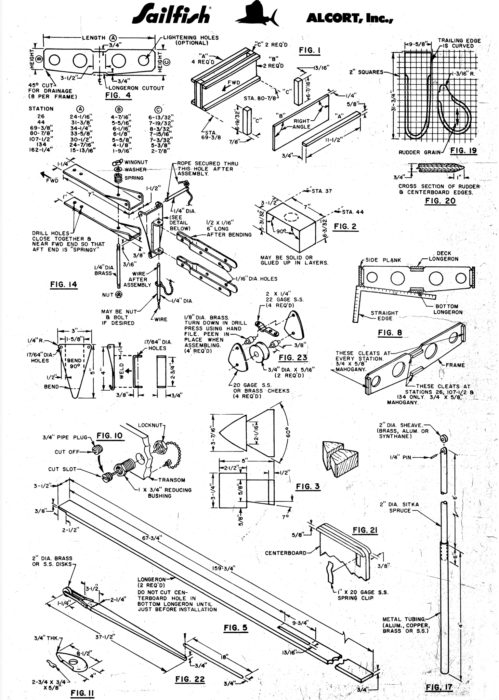























IMAGES
VIDEO
COMMENTS
The Sailfish had a beam of 31-1/2″, a crew capacity of 300 lbs, and weighed 82 lbs. The volume of air enclosed by the hull and deck made the boat virtually unsinkable. A 65-square-foot lateen sail provided ample power. Photographs by the authors. The authors' Super Sailfish, ZSA ZSA, is their restoration of a wooden boat built in the 1950s.
As promised, here are the plans for a sit-on-top sailing dinghy, the Australian Sailfish. The Australian Sailfish is a scow version of the American Sailfish, designed in 1958 by Bruce Scott and Jack Carroll. Designed for home construction, 780 plans of the Australian Sailfish were sold. I've chunked images from the original plans into a PDF ...
The Super Sailfish is 0-6-4 (+), or 6 1/2 inches (+) aka 6 9/16 inches. The interesting part is that the keel height is the same amidships, 9 inches when including the 1/4 inch keel strip and the 1/4 inch thicknesses of the deck and the hull. So that extra V bottom in the Standard helps her float a lot higher.
At this time, the hulls were still made of wood. In 1959 Joe Schmit of Naugatuck Chemical Company convinced Alcort to try fiberglass. The SUPER SAILFISH was produced in fiberglass in 1959 and the SUNFISH manufacturing process was changed over to fiberglass in 1960. The SAILFISH was phased out in 1962, and the SUPER SAILFISH a few years later.
Full page fax print. Foreword This set of prints outline the construction of most everything needed to build a Sailfish from raw materials. They even include dimensions for constructing fittings such as the mainsheet blocks and rudder hardware from raw stock. Knowledge of metal forming, welding, sail making, and woodworking are implicit skills ...
11-18-2003, 03:18 PM. A couple of other options: Dave Goodchild has inexpensive reprints of old plans from magazines, including several board boats here, and there are free plans for bunch of boats, also from old magazines, including at least one of the Sailfish type here. Stevenson Projects (the Weekender people) have a couple of boats I think ...
Alcort Sailfish depicting the sit-upon sailing posture, the shallow draft hull, and the characteristic lateen rigged sail, c1963. The Sailfish sailboat is a small, hollow body, board-boat style sailing dinghy.The design is a shallow draft, sit-upon hull carrying a lateen rigged sail mounted to an un-stayed mast.This style sailboat is sometimes referred to as a "wet boat" because, with its ...
Alcort Sailfish is a 11′ 7″ / 3.5 m monohull sailboat designed by Alexander Bryan/Cortland Heyniger and built by Alcort between 1945 and 1962. Great choice! Your favorites are temporarily saved for this session. ... The SAILFISH is the first boat built by Alcort Inc. Plywood construction, wood spars, and available as a kit.
The SAILFISH was originally built of plywood and many were sold as kits. The fiberglass SUPER SAILFISH MKII was introduced in 1959 and the original was discontinued shortly afterward. ALCORT produced several hundred SUPER SAILFISH a year but it was soon eclipsed in popularity by the hugely successful SUNFISH, which was first produced in ...
Paul Flynn loves his supersized Sailfish. His new rig is the first of the 3200 Platinum Sports range and features a beefed-up 3m beam and extended waterline length. It's a dead-calm winter's morning and The Captain's crew is rugged up for a Sydney Harbour session. A low fog is reluctantly lifting off the harbour.
The Sunfish, a direct descendant of the 1945 Sailfish, was the creation of ALCORT Sailboats, founded by Alex Bryan and Cortlandt Heniger. A hollow-bodied wooden "sit-on" sailboat, the Sailfish was featured in LIFE magazine's 1949 article "World's Wettest, Sportiest Boat." It went through various iterations and in 1952, the designers at ALCORT, with considerable input from Aileen ...
Tweet. #1. Wooden "Sunfish" Plans. 12-09-2013, 04:05 PM. In the March 1964 issue, Mechanix Illustrated published plans for something they called a "Funfish". As far as I can tell without measuring, it's essentially identical to the original wooden Sunfish they made before switching to that unmentionable substance.
Rig each sinker to several inches of 12-pound mono with a snap swivel at its opposite end. This snap swivel hangs on a short Bimini twist in your fishing line and remains open. When the sinker comes within reach, the open swivel is simply lifted from the Bimini twist, enabling the angler to wind their fish to the boat.
THE ALCORT SAILFISH and SUNFISH. A couple of amateur ice-boat builders in Connecticut started building small boats that used the same lateen sailing rig that their ice-boats used. They called it a Sailfish. A photographer saw people having fun with their Sailfish and did a story on the boat. After Alcort made it into the 1949 LIFE Magazine, a ...
The original Sunfish was designed and built between 1952 and 1954. Even the guys (Al &Cort of "Alcort") who designed and built it couldn't remember exactly when. The first fiberglass Sunfish came out in 1960. Up until that time, they were plywood with spruce spars and originally, ten-panelled cotton sails.
In 1946, Alex Bryan and Cortlandt Heyniger had combined bits of their first names to create Alcort, Inc., and the first sailboat that they designed, in 1947, was the 11′ 7″ Sailfish, built in Waterbury, Connecticut. The Sailfish had a beam of 31-1/2″, a crew capacity of 300 lbs, and weighed 82 lbs. The volume of air enclosed by the hull ...
This is the page to order a set of Australian Sailfish plans, plus a few other bits of information.. In November 2016 Jack Carroll gave his OK for plans for the Australian Sailfish to be made available online. In November 2019 a new Plan Set was made available consisting of a 76 page Building Instructions file and 4 larger format files covering frame templates, rudder and centreboard construction.
I also recall the many different plan sets available from various boat designers advertising in the back pages of Boys Life and "Popular" periodicals back a few years. I wanted to see if you had a set of brand name Alcort plans. The set I discovered is for the 13' 7" Super Sailfish. There was also a 11' 7" Standard model at the time.
Sailboats that you can build from home will likely be a small boat under 20 feet. These could be from many different boat suppliers such as B&B Yachts, Brooks Boat Designs, and Chase Small Craft. Boat plans will vary based on your budget and how much time you have on your hands. Based on my previous experience, building your own boat will take ...
Super Sailfish MKII is a 13′ 6″ / 4.1 m monohull sailboat designed by Alex Bryan/Cortland Heyniger and built by AMF Corp. and Alcort between 1959 and 1975. ... the more easily it will carry a load and the more comfortable its motion will be. The lower a boat's ratio is, the less power it takes to drive the boat to its nominal hull speed or ...
BOAT PLANS & FULL SIZE PATTERNS - Package Includes latest sail boat plans, SAILBOAT building plan updates & revisions, PLUS direct contact with the designer. This design is for those that want a fast cruising sailboat and one that can accommodate the family or a racing crew and is a joy to sail as well as being easy to build in a variety of ...
There really aren't that many pieces in the wooden sunfish, according to the kit instructions. I would remove the top and measure the dimension of each piece: hull top, two bottom pieces, two sides, and keelson. Bulkhead width and height at centerline and the sheerline. That's all you need to replicate it. Nov 9, 2016.
Our newest sailboat plans are rendered with all parts shown full-size on long scrolls of paper. Choosing the Right Small Craft. PocketShip "PocketShip" is a small cruising sailboat of refined model, meant to sail well on all points, provide dry camping accommodations for two adults, and tow behind a four-cylinder car. More than 60 are sailing ...